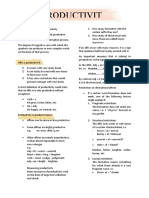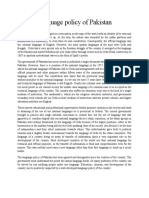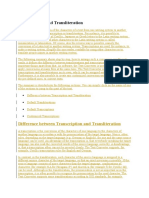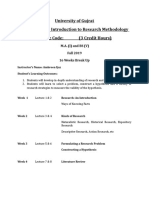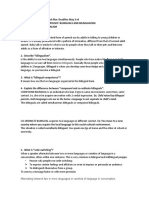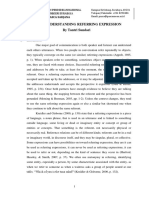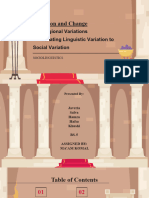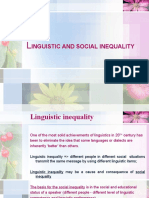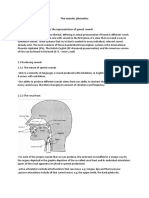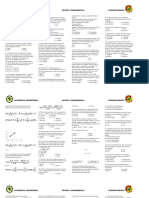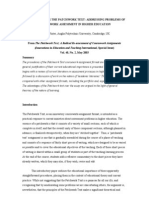SECOND LANGUAGE ACQUISITION/LEARNING
SECOND LANGUAGE LEARNING
- Learning a L2 in the country where it is spoken is referred to as second language learning, while if
you are not in the country that speaks it, it is referred to foreign language learning. (ESL) (EFL)
ACQUISITION AND LEARNING
- are two different ways of acquiring an L2. Acquisition is when one gradually develops the ability to
utilize the language by using it naturally and communicatively with others who speak it. Learning on
the other hand refers to the more conscious process of accumulating knowledge of the features
(vocabulary, grammar) of a language.
- The former of these two ways of L2 acquisition is superior in actual interactive ability, while the
latter is superior in what one actually knows about the language. Personally, I’d rather be able to
speak it than understand it in a scientific manner.
ACQUISITION BARRIERS
- The way in which most people encounter the L2 that they’re supposed to learn is pretty shitty. Once
or twice a week in a situation where no meaningful interaction takes place, and one simply learns
from books like an idiot, stuck in a classroom that one is at best, apathetic towards. There is no
necessity, as one already has the L1 for communicative purposes, and there is no true motivation as
it is enforced by the school structure rather than coming from any intrinsic wish.
- Even people who perfectly learn the language, however, still seem to retain their accent,
distinguishing them as a non-native speaker. One naturally only notices an accent when the person
speaks. Joseph Conrad for example wrote literature that would become part of the English canon,
but upon speaking to the man one could not help but note that he remained a filthy pole.
- This type of observation is typically used as evidence that, after the critical period for language
acquisition (birth to puberty) has passed, it becomes very difficult to acquire a L2.
Note from Bor: This is pretty retarded if you ask me. A baby is exposed to his L1 for a min. of five
hours a day, seven days a week, and yet still requires at least six years to speak like an actual human
being, let alone write like one. If an adult was living in an L2 environment, being exposed to the
language every day for several hours, while also actively learning it, he would need at most 2 years to
reach C2 levels. At most it seems that if one does not learn the language during the critical period, it
is not as instinctual and one retains an accent. I went to France for seven months, only five of which I
spent actually learning, and I left with a B2.
AFFECTIVE FACTORS
- are another reason teenagers and adults have it harder. Less amount of time to learn, no need to
do so as L1 is already mastered, no motivation as L2 is often enforced by school, too self-conscious to
return to the child stage of sounding like retard when you talk, unpleasant environment and teachers
(parents actually care about you learning and love you), higher stress etc.
�- Adults speak the L2 better when drunk, which just goes to show how much they let their ego get in
the way of actual progress. Too arrogant to learn is the phrase that comes to mind.
THE GRAMMAR TRANSLATION METHOD
- is a method that treats the L2 as any other academic subject. Chunking and memorizing of
vocabulary and grammar, writing and theory are emphasized over speaking and praxis. It is not
surprise that the most common argument against this method is the claim that the students seem to
leave the classroom with high grades and no ability to actually speak or interact with native speakers.
THE AUDIOLINGUAL METHOD
- involved a systematic presentation of L2 structure in the form of drills that the student had to
repeat, from simple to complex. Hours were spent on oral drills. In addition, language is learned
through interaction, this has even less than the grammar-translation method, where one at least
interacts with the text-book.
COMMUNICATIVE APPROACHES
- are partially a reaction against the artificiality of “pattern-practice” and also against the belief that
treating the L2 as an academic subject will allow one to use it. Functionality over form so to say.
Instead of learning past tense, one learns how to ask someone to repeat what they said for example.
These changes coincide with an attempt to provide L2 learning for a specific purpose, e.g. “Japanese
for business-people.”
FOCUS ON THE LEARNER
- is as one can infer, focusing on the learner, not on the teacher, the textbook, or the method. The
most revolutionary thing attempted here is the act of seeing errors of the student not as something
to be immediately corrected with endless drills, but rather as something to be noted as a marker of
the acquisition process. Like in children really. Adults learning L2 will also make mistakes, let them.
They’ll figure it out.
TRANSFER
- means using structures, words, expressions from the L1 when performing in the L2. There are
negative and positive transfers, depending if the transfer works or not.
INTERLANGUAGE
- Language produced by L2 speakers has errors that stem neither from the L1 nor the L2. There
seems to be an inherently variable in-between. Which lessens in impact as the L2 is mastered. A
failure to move on from interlanguage to complete mastery of L2 is called fossilization.
Pronunciation is seen as an aspect of fossilization.
�MOTIVATION
- Instrumental motivation means wanting to learn the L2 in order to achieve something else than the
learning itself. Such as graduation, or a promotion. Then there is integrative motivation, where the
purpose itself is to learn the language for social purposes.
- Success also provides motivation. There a learning process where the learner is given the
opportunity to successfully use the language should be more successful than one where one dwells
on errors.
INPUT AND OUTPUT
- Input is the language that the L2 is exposed to. To be of any help, it needs to be comprehensible.
This is why foreigner talk exists. Basically, caregiver speech, but for Gaijin adults.
- Negotiated input is L2 material that the learner can acquire in interaction through requests for
clarification while active attentions is being paid to what is said.
- The opportunity to produce comprehensible output seems to also be an important learning
opportunity, which makes SENSE SINCE IT’S A FUCKING PART OF INTERACTING; YOU KNOW; THE
WAY PEOPLE NORMALLY LEARN LANGUAGE. In an attempt to support this, task-based learning
exists. You need to talk in groups, utilize the language in games etc.
COMMUNICATIVE COMPETENCE
- is defined as the general ability to use language accurately, appropriately and flexibly. It is divided
into three components
1. grammatical competence involves the accurate use of words and structures
2. sociolinguistic competence involves the ability to use appropriate language according to social
context. (The difference between “Can I have some water?” vs. “Give me some water!”)
3. strategic competence is the ability to organize a message effectively and to compensate for any
difficulties. For example, using a communicative strategy. E.g. the things horses wear on their feet,
to refer to horseshoes.
APPLIED LINGUISTICS
- In order to investigate L2 learning we need the help of fields such as communication studies,
education, psychology and sociology.
STUDY QUESTIONS
1. The ‘Joseph Conrad’ phenomenon likely refers to being able to write a language as a native
speaker, yet speaking with an accent.
�2. Mathematics is learned, and not acquired, one cannot interact with someone in a communicative
manner in ‘math’ to acquire the skill instinctually.
3. Four typical barriers to acquire an L2 as an adult in comparison to an L1 as a child are: Time-
constraints, issues with the ego, issues with the environment, issues with motivation in case it was
not by choice that one is learning the L2 e.g. in school, already having an L1 to fulfil one’s interactive
needs, stress
4. Positive transfer is when one uses structures/sounds/words/expressions from one’s L1, in one’s
L2, and it is correct. Like blue car, blaues auto. The adjective comes before the noun in both English
and German. Bleu voiture, on the other hand is false, in French the adjective comes after the noun,
this is an example of negative transfer.
5. When an interlanguage fossilizes, the speaker is stuck in that level in between which he was at
when the fossilization occurred
6. Communicative competence has three components. Grammatical, sociolinguistic and strategic
competence. The first deals with grammar, the second with social context, and the third for
communicating effectively and to avoid errors with the knowledge that one has.
RESEARCH TASKS
A. Input is the knowledge that an environment that an environment offers to a learner. Intake is the
knowledge that the learner successfully processes.
B. The stylistic continuum in language learning simply means that L2 learners also have a choice in
how they speak. If they pay attention to correctness, they can use the ‘careful style’ and if they make
spontaneous choices such as in free conversation, they can use the ‘vernacular style’
C. The arguments made to support the idea that output matters a lot in L2 learning are.
-When learners are obliged to produce output, they have the opportunity to modify and play with
what they learned. It is not a regurgitation but an exercise in itself.
-It is necessary to speak a lot to make the process autonomous, which is the goal
D.








